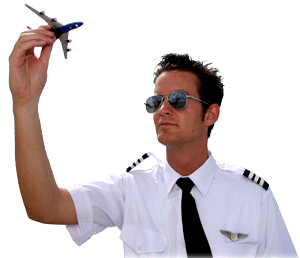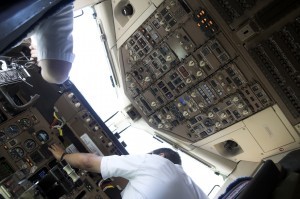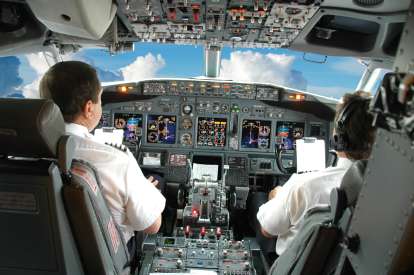Overview
 There are a number of research needs and deficiencies in training methodologies for upset/stall prevention and recovery training protocols. In an effort to address these gaps we offer the following outline. This high level framework and general sequence of training phases has been practically verified to yield consistent results in enhanced upset/stall prevention and recovery training (UPRT). The verified program delivery outlined below integrates on-line computer-based training, instructor-led training, on-aircraft platforms and level D full flight simulators. Despite the content, sequence, methodologies and specialty topics delivered by a training organization, the success of any training program is directly related to the individual instructor’s ability to present a building block approach appropriate to, and tailored to, the individual pilot-in-training. UPRT is often an individualized training process due to both its inherent complexities and the widely varying experience levels of commercial pilots. The extent, depth and duration of the training program can vary significantly as a function of the baseline knowledge and skill of both the Instructor Pilot and trainee involved in the training process.
There are a number of research needs and deficiencies in training methodologies for upset/stall prevention and recovery training protocols. In an effort to address these gaps we offer the following outline. This high level framework and general sequence of training phases has been practically verified to yield consistent results in enhanced upset/stall prevention and recovery training (UPRT). The verified program delivery outlined below integrates on-line computer-based training, instructor-led training, on-aircraft platforms and level D full flight simulators. Despite the content, sequence, methodologies and specialty topics delivered by a training organization, the success of any training program is directly related to the individual instructor’s ability to present a building block approach appropriate to, and tailored to, the individual pilot-in-training. UPRT is often an individualized training process due to both its inherent complexities and the widely varying experience levels of commercial pilots. The extent, depth and duration of the training program can vary significantly as a function of the baseline knowledge and skill of both the Instructor Pilot and trainee involved in the training process.
Academic Preparation
Gaps in the academics associated with Upset Prevention and Recovery Training can be reduced by ensuring academic preparation establishes the foundation from which situational awareness, insight, knowledge and, eventually, skills will be developed. As in practical skill development, academic preparation should move from general to specific while clearly emphasizing the importance of basic concepts during each education phase. Although academic preparation is crucial and does offer a level of mitigation of the Loss-of-Control In-Flight (LOC-I) threat, the long-term retention of pertinent academic knowledge is best achieved when applied and correlated during practical hands-on awareness, prevention and recovery exercises.
Practical Skill Development
The development of practical skills can follow a variety of valid training paths. Prior research has investigated a variety of training tools that can be used for skill training. Regardless of the tool being employed, every effort should be made by the training organization to ensure academic preparation is presented in relevance-based portions prior to each practical training session to enhance student retention and comprehension. Alternatively, academic preparation could precede the practical course entirely.
Awareness Training
 The enhanced stall and airplane upset environment is often unfamiliar to pilots-in-training. In support of the building block approach of paired academic and practical skill development packaging, a significant portion of concept and strategy awareness training can be best addressed during the initial training sessions. Elements of awareness development have a variety of applications within both the prevention and recovery training phases. Through focus on the individual awareness elements of AOA, load, lift vector and energy management (and consequences of mismanagement) early in the UPRT training program, the pilot-in-training is afforded an opportunity to gain trust and confidence in the training platform, instructor pilot and construction of the program itself. It is crucial for fundamental concepts to be introduced in a non-threatening manner to enhance the pilot in training’s situational awareness at a rate that can be internalized. Inappropriately subjecting a pilot in training to dramatic events beyond their ability to resolve correctly can have severe long-term negative consequences associated with their trust, overall maximum skill level, and ability to contain fear and stress-induced over-response in later portions of the training program. Re-enforcing learning through positive experiences early in the training regime significantly impacts the pilot-in-training’s overall capability to expand practical knowledge and skill in a short period of time.
The enhanced stall and airplane upset environment is often unfamiliar to pilots-in-training. In support of the building block approach of paired academic and practical skill development packaging, a significant portion of concept and strategy awareness training can be best addressed during the initial training sessions. Elements of awareness development have a variety of applications within both the prevention and recovery training phases. Through focus on the individual awareness elements of AOA, load, lift vector and energy management (and consequences of mismanagement) early in the UPRT training program, the pilot-in-training is afforded an opportunity to gain trust and confidence in the training platform, instructor pilot and construction of the program itself. It is crucial for fundamental concepts to be introduced in a non-threatening manner to enhance the pilot in training’s situational awareness at a rate that can be internalized. Inappropriately subjecting a pilot in training to dramatic events beyond their ability to resolve correctly can have severe long-term negative consequences associated with their trust, overall maximum skill level, and ability to contain fear and stress-induced over-response in later portions of the training program. Re-enforcing learning through positive experiences early in the training regime significantly impacts the pilot-in-training’s overall capability to expand practical knowledge and skill in a short period of time.
Prevention Training: Recognition & Avoidance
As previously stated, the primary focus of all enhanced stall and upset recovery training programs and methodologies must be firmly and squarely placed on prevention through enhanced awareness. There are two general types of prevention training. One type is time-favorable and the other type is time-critical. Although thorough UPRT should address both, the latter time-critical component is often the most difficult to address for a variety of psycho/physiological reasons.
Level 1 Prevention: through Aeronautical Decision Making: Time Favorable
This element of prevention revolves around the concept of effective aeronautical decision making (ADM) through analysis, awareness, resource management and intercepting the error chain through airmanship and sound judgment. Typically on the time scale of minutes or hours, a common example would be a situation where the pilot assesses the conditions at an airport prior to descent and recognizes those conditions as being too severe to safely subject the airplane to that environment on approach. Although a very simple scenario, the process of using situational awareness to avert a potentially threatening flight condition is an example of prevention through effective ADM. In the preceding example, if the crew elected to continue to the planned destination as the conditions were not too severe to abandon the approach, an effective flight crew would brief their mitigation strategies, apply appropriate counter-measures (utilize weather radar, request updated weather information, apply increased approach speeds, etc.) and identify and narrow their approach targets (i.e. we will initiate a missed approach if we do not hit specific targets on approach). The latter scenario is a more comprehensive demonstration on how effective flight crews use time favorable prevention strategies to enhance loss of control in-flight threat mitigation.
Level 2 Prevention: through Proportional Counter-Response: Time Critical
 In simple terms, proportional counter response is the timely manipulation of flight controls and thrust, either singly or in combination, to manage an airplane flight attitude and/or flight envelope excursion that was unintended or not commanded by the pilot. The trained pilot is situationally aware and recognizes the developing threat. The time scale of this element of prevention is typically on the order of seconds or fractions of seconds with its goal being to recognize the development of a threatening condition and take proportional avoidance actions to preclude its development into an airplane upset. Due to the surprising nature of this level of developing upset, there is often a high risk of the pilot panicking and over-reacting to the event with the further risk of making the situation worse, unrecoverable or even generating structural failure in rare instances. The ability of the trained pilot to overcome surprise/startle factor can be significantly enhanced through exposure to similar time-critical events during training in combination with the pilot’s enhanced skill set capable of resolving a flight condition beyond those experienced in day-to-day operations. Note: In fly-by-wire airplanes with active flight envelope protections, this phase of time-critical prevention through proportional counter-response may be accomplished by the pilot allowing the automation to attempt to manage the time-critical disturbance in its entirety (if recommended by the manufacturer).
In simple terms, proportional counter response is the timely manipulation of flight controls and thrust, either singly or in combination, to manage an airplane flight attitude and/or flight envelope excursion that was unintended or not commanded by the pilot. The trained pilot is situationally aware and recognizes the developing threat. The time scale of this element of prevention is typically on the order of seconds or fractions of seconds with its goal being to recognize the development of a threatening condition and take proportional avoidance actions to preclude its development into an airplane upset. Due to the surprising nature of this level of developing upset, there is often a high risk of the pilot panicking and over-reacting to the event with the further risk of making the situation worse, unrecoverable or even generating structural failure in rare instances. The ability of the trained pilot to overcome surprise/startle factor can be significantly enhanced through exposure to similar time-critical events during training in combination with the pilot’s enhanced skill set capable of resolving a flight condition beyond those experienced in day-to-day operations. Note: In fly-by-wire airplanes with active flight envelope protections, this phase of time-critical prevention through proportional counter-response may be accomplished by the pilot allowing the automation to attempt to manage the time-critical disturbance in its entirety (if recommended by the manufacturer).
Recovery Training: Recognition & Recovery
 Once an airplane’s flight condition exceeds a certain level of severity, whether unintentional or uncommanded, the pilot must recognize the necessity of intervention and avert disaster through the pro-active application of effective upset recovery techniques. Early prevention through proportional counter-response in a developing airplane upset cannot be over-emphasized in UPRT. However, once the flight condition has transitioned from the prevention phase and into the recovery phase, the pilot must recognize the transition and employ immediate corrective recovery action. Although definitions of an upset can vary, an airplane upset is typically defined as an unintentional flight condition that has deviated beyond established threshold values of pitch, roll, airspeed and/or angle of attack. One major deficiency in many UPRT programs is that the recovery phase of UPRT is often the primary, or exclusive, focus of training. On its own recovery training does offer significant value on a variety of levels, however, the core element of UPRT must again remain focused on prevention. However, the process of recovery training enhances the pilot’s ability to contain startle factor, comprehend the primary all-attitude all-envelope proper use of primary flight controls and to also enhance situational awareness. Similar to the overall concept of a building block approach to UPRT, the recovery phase is best served by following a similar process of awareness and skill development. The general sequence of imparting UPRT skills tends to follow the flow of (a) Primary Control Strategies, (b) Alternate Control Strategies, (c) Secondary Flight Control Integration, and (d) Type/Class Specific Considerations. It must be clear that type-specific considerations can be crucial to the effective implementation of recovery techniques and that the airplane manufacturer’s recommended recovery methods always take precedence. This general building-block sequence addressing the recovery phase of skills training has been shown to impart long lasting skill sets to pilots while maximizing the understanding of prevention and recovery mitigations within the widest range of fixed wing airplane operations. The end result of a comprehensive upset recovery training program is to arm pilots with enhanced awareness and skills that are transferable and effective in their own airplane type.
Once an airplane’s flight condition exceeds a certain level of severity, whether unintentional or uncommanded, the pilot must recognize the necessity of intervention and avert disaster through the pro-active application of effective upset recovery techniques. Early prevention through proportional counter-response in a developing airplane upset cannot be over-emphasized in UPRT. However, once the flight condition has transitioned from the prevention phase and into the recovery phase, the pilot must recognize the transition and employ immediate corrective recovery action. Although definitions of an upset can vary, an airplane upset is typically defined as an unintentional flight condition that has deviated beyond established threshold values of pitch, roll, airspeed and/or angle of attack. One major deficiency in many UPRT programs is that the recovery phase of UPRT is often the primary, or exclusive, focus of training. On its own recovery training does offer significant value on a variety of levels, however, the core element of UPRT must again remain focused on prevention. However, the process of recovery training enhances the pilot’s ability to contain startle factor, comprehend the primary all-attitude all-envelope proper use of primary flight controls and to also enhance situational awareness. Similar to the overall concept of a building block approach to UPRT, the recovery phase is best served by following a similar process of awareness and skill development. The general sequence of imparting UPRT skills tends to follow the flow of (a) Primary Control Strategies, (b) Alternate Control Strategies, (c) Secondary Flight Control Integration, and (d) Type/Class Specific Considerations. It must be clear that type-specific considerations can be crucial to the effective implementation of recovery techniques and that the airplane manufacturer’s recommended recovery methods always take precedence. This general building-block sequence addressing the recovery phase of skills training has been shown to impart long lasting skill sets to pilots while maximizing the understanding of prevention and recovery mitigations within the widest range of fixed wing airplane operations. The end result of a comprehensive upset recovery training program is to arm pilots with enhanced awareness and skills that are transferable and effective in their own airplane type.
Containing the Startle/Surprise Factor in Upset Recovery Training
 All training programs must include and address startle/surprise factor. Imparting UPRT skill sets to pilots, without addressing startle/surprise factor, will not reliably enable the pilot to effect recovery during the mentally and physically demanding environment of an airplane upset. Although skill development should happen first to maximize the pilot’s ability to integrate startle/surprise factor containment, the academic understanding of, and practical experience with, surprise/startle events are crucial in UPRT. Presently, the required magnitude, quality and relevance of startle/surprise factor, as it relates to UPRT awareness and skill development specifically, cannot be fully accomplished through ground-based simulation exclusively. The reality of the on-aircraft UPRT training process immerses the pilot within an augmented fidelity of the startle/surprise factor dynamic that is unique to the in-flight real-world environment.
All training programs must include and address startle/surprise factor. Imparting UPRT skill sets to pilots, without addressing startle/surprise factor, will not reliably enable the pilot to effect recovery during the mentally and physically demanding environment of an airplane upset. Although skill development should happen first to maximize the pilot’s ability to integrate startle/surprise factor containment, the academic understanding of, and practical experience with, surprise/startle events are crucial in UPRT. Presently, the required magnitude, quality and relevance of startle/surprise factor, as it relates to UPRT awareness and skill development specifically, cannot be fully accomplished through ground-based simulation exclusively. The reality of the on-aircraft UPRT training process immerses the pilot within an augmented fidelity of the startle/surprise factor dynamic that is unique to the in-flight real-world environment.
Crew Resource Management in Upset Recovery Training
 The CRM aspect of Upset Recovery Training is particularly challenging due to the wide spread inconsistency of UPRT training in the commercial aviation industry. Although there is value in one crew member being comprehensively trained in the airplane upset/stall discipline, the presence of an additional crew member in the decision making process, as is the case in the CRM environment, can have dire consequences. Although the fundamental principles of enhancing situation awareness and promoting mutual decision making in the CRM environment is supportable, the timeline is intensely compressed. Given Boeing/NASA research[1] demonstrating the critical window of time necessary to resolve an airplane upset often at less than 10 seconds to initiate correct recovery action, the threat posed by the interference of the untrained crewmember is severe. In general terms, the crew must (a) communicate and confirm the situation, (b) transfer control to the most situationally aware pilot, and (c) work together through standardized interactions to mutually enhance awareness of the flight condition in order to manage stress between crew members and mitigate fear in a life-threatening situation. Due to the counter-intuitive nature of the UPRT environment, the untrained crewmember can be the most unpredictable element of the CRM-dependent airplane upset prevention and/or recovery scenario.
The CRM aspect of Upset Recovery Training is particularly challenging due to the wide spread inconsistency of UPRT training in the commercial aviation industry. Although there is value in one crew member being comprehensively trained in the airplane upset/stall discipline, the presence of an additional crew member in the decision making process, as is the case in the CRM environment, can have dire consequences. Although the fundamental principles of enhancing situation awareness and promoting mutual decision making in the CRM environment is supportable, the timeline is intensely compressed. Given Boeing/NASA research[1] demonstrating the critical window of time necessary to resolve an airplane upset often at less than 10 seconds to initiate correct recovery action, the threat posed by the interference of the untrained crewmember is severe. In general terms, the crew must (a) communicate and confirm the situation, (b) transfer control to the most situationally aware pilot, and (c) work together through standardized interactions to mutually enhance awareness of the flight condition in order to manage stress between crew members and mitigate fear in a life-threatening situation. Due to the counter-intuitive nature of the UPRT environment, the untrained crewmember can be the most unpredictable element of the CRM-dependent airplane upset prevention and/or recovery scenario.
Authors:
Paul BJ Ransbury, President / APS Chief Flight Instructor / MCFI-A
Aviation Performance Solutions
Dr. Janeen Kochan, Ph.D., Human Factors Scientist / Designated Pilot Examiner / Instructor Pilot
Aviation Research, Training, and Services, Inc.
Related Paper: Psychological Considerations During High-performance Flight Training
Sincere Thanks and Appreciation for Editorial Review, Conceptual Accuracy Confirmation and Content Analysis:
Bryan Burks, ALPA Training Council Vice Chairman / 737 Captain
Alaska Airlines
Randall Brooks, Senior Director Flight Training / Former Eclipse Upset Recovery Training Program Manager
Opinicus Corporation
Clarke McNeace, Director of Flight Training & Standards / MCFI-A / Assistant Chief Flight Instructor
Aviation Performance Solutions
[1] Defining Commercial Transport Loss-of-Control: A Quantitative Approach – Aug 2004




Comments: